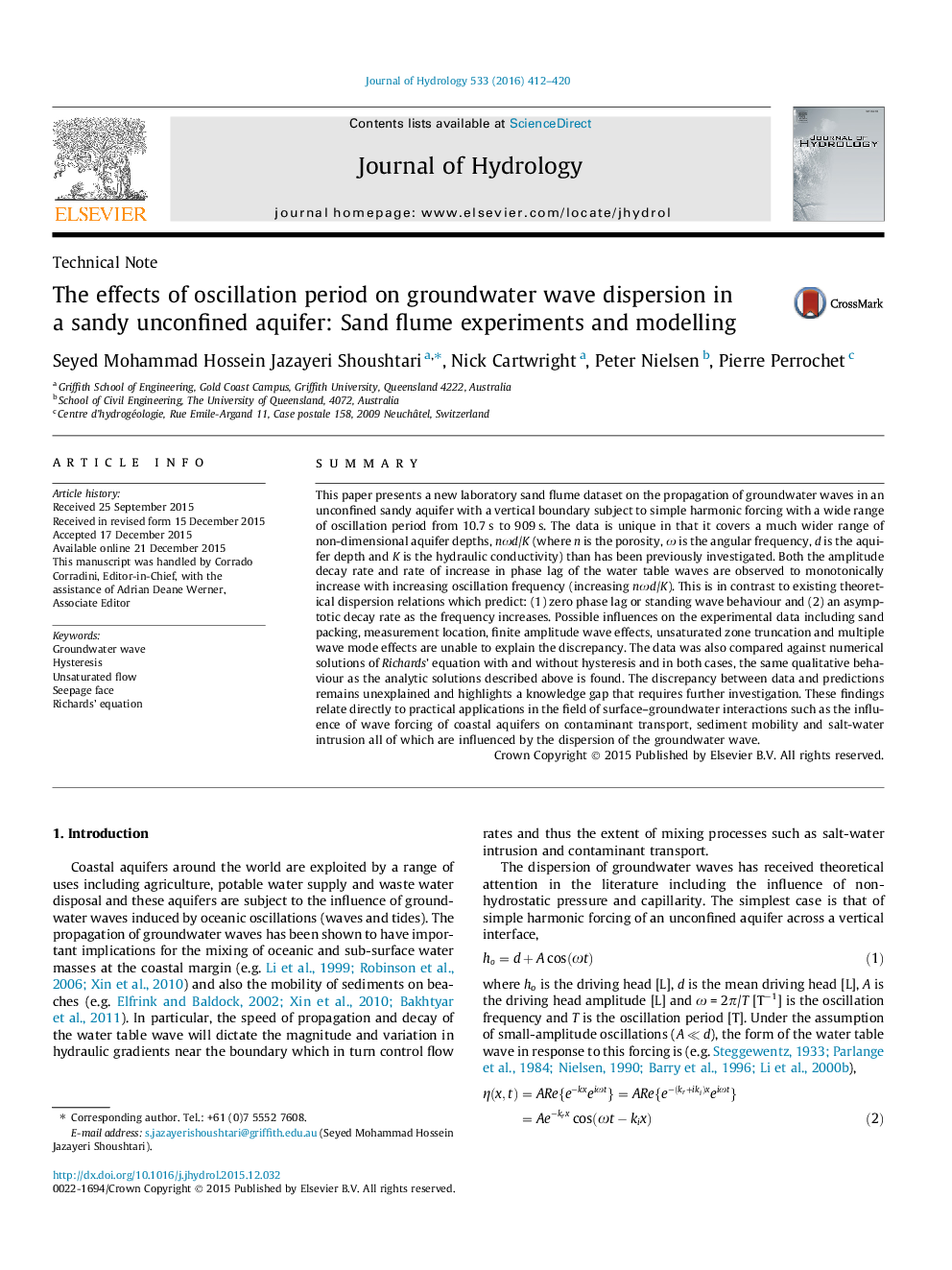| Article ID | Journal | Published Year | Pages | File Type |
|---|---|---|---|---|
| 6410523 | Journal of Hydrology | 2016 | 9 Pages |
â¢New laboratory data on groundwater wave propagation in an unconfined aquifer.â¢Laboratory data cover a wide range of oscillation period from 10.7 s to 909 s.â¢Numerical solution of hysteretic and non-hysteretic Richards' equation for all periods.â¢A monotonic increase in the observed water table's amplitude decay and phase lag.â¢Qualitative discrepancy between data and existing theoretical and numerical models.
SummaryThis paper presents a new laboratory sand flume dataset on the propagation of groundwater waves in an unconfined sandy aquifer with a vertical boundary subject to simple harmonic forcing with a wide range of oscillation period from 10.7Â s to 909Â s. The data is unique in that it covers a much wider range of non-dimensional aquifer depths, nÏd/K (where n is the porosity, Ï is the angular frequency, d is the aquifer depth and K is the hydraulic conductivity) than has been previously investigated. Both the amplitude decay rate and rate of increase in phase lag of the water table waves are observed to monotonically increase with increasing oscillation frequency (increasing nÏd/K). This is in contrast to existing theoretical dispersion relations which predict: (1) zero phase lag or standing wave behaviour and (2) an asymptotic decay rate as the frequency increases. Possible influences on the experimental data including sand packing, measurement location, finite amplitude wave effects, unsaturated zone truncation and multiple wave mode effects are unable to explain the discrepancy. The data was also compared against numerical solutions of Richards' equation with and without hysteresis and in both cases, the same qualitative behaviour as the analytic solutions described above is found. The discrepancy between data and predictions remains unexplained and highlights a knowledge gap that requires further investigation. These findings relate directly to practical applications in the field of surface-groundwater interactions such as the influence of wave forcing of coastal aquifers on contaminant transport, sediment mobility and salt-water intrusion all of which are influenced by the dispersion of the groundwater wave.
